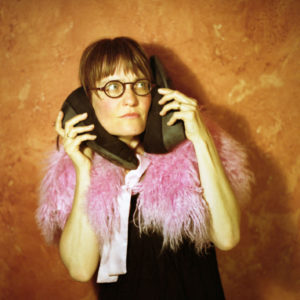
How did you come up with the idea for this book?
It is often the form that inspires the story. I knew the work of the artist Bruno Munari and I had long dreamed of being able to create a narrative using flaps. This is now my fifth book with paper engineering; I wanted to do something different with it. I built up the journey little by little by cutting paper. I like to surprise myself and feel free at the beginning of a new book.
While I was making the book, I had the image of a child playing in his room with a small basket, creating a wacky adventure with the random objects he comes across. So I knew I wanted a little man with a suitcase—that simple!
I also knew very quickly how the story would end. All I had to do was organize the objects and use them in the narrative. Designing this book was very playful: I added, I removed, I added, I removed … I was a bit like a child, with few constraints and no borders on my imagination.
What kind of traveller are you? Do you follow the advice from the book’s epigraph—“A good traveller has no set plans and no destination”?
I rarely travel in the spirit of “au petit bonheur la chance”—serendipity—but I wish I could do it. What freedom that must give! I wish it for everyone. I like the idea that life is undefined and keeps surprises in store: a bit like in the book, where the reader goes from surprise to surprise. A life without surprise seems bland to me.
What’s in your suitcase when you travel?
It all depends on what I have on hand. Looking now on my desk, I would bring paper and pencils, so I could trade my drawings with people I meet. Below are some drawings from my travel to New Zealand in 2019.
Is there a lesson or moral to this story?
Ouch! As a child, I hated the morals I found at the end of some tales. This story is more of a game followed through life wisdom or good sense. The ending could be puzzling for some because the idea of “nothing” is scary, but that’s what’s interesting. I hope the reader wonders, after going through all the objects that were in the suitcase, what do we really need to keep?
How did you create the illustrations? Can you describe your process?
First I create a raw, quick model to put down the story and the paper flaps. I can easily work with it and enter into the narrative. Then in the implementation stage, I draw the images more accurately in pieces to create the templates of each piece that will be folded or glued. Then comes the colouring on the computer, before I send it to my editor. The manufacturer and my editor work with the printer to create the book—an important step for it to become a beautiful object. Especially in this book, where turning the flaps drives the narrative.
Inside the Suitcase is available wherever you buy or consume your books and on our website. Other books available by Clotilde Perrin include Inside the Villains and The House of Madame M.
Want to hear more from Gecko Press? Every month we send out a newsletter with all of our latest blog articles, activity sheets, and sometimes a competition too! Sign up to our mailing list here.
